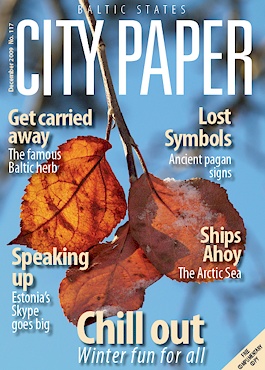The Measurement Man - The long shadow of a cultural icon
 Countries take great pride in
their UNESCO World Heritage Sites, and in the Baltics these are
pretty special spots. But few are aware that one of the local winners
of this accolade is a place in the mind rather than a man-made or
natural wonder.
Countries take great pride in
their UNESCO World Heritage Sites, and in the Baltics these are
pretty special spots. But few are aware that one of the local winners
of this accolade is a place in the mind rather than a man-made or
natural wonder.
Despite lacking the "wow" factor of Tallinn's Old Town or the Curonian Spit, the Struve Geodetic Arc is a monument to human curiosity and energy. Since the 16th century people had known that the world was round, but a bit later Sir Isaac Newton speculated that it might flatten near the poles. So in the early 1800s, Baltic German scientist Friedrich George Wilhelm Struve set out to solve the riddle by measuring a sufficiently long stretch of the meridian to establish the exact size and shape of the Earth.
Born in an area of Denmark which is now in Germany, Struve was the second of a five-generation dynasty of astronomers. His father moved the family to the province of Livonia (covering today's Estonia and northern Latvia) in Imperial Russia to escape from the Napoleonic occupation of his homeland. Young Friedrich studied at Tartu University and upon graduation became a professor there and director of its observatory.
Fortune favors the brave, and his ambitious scheme benefited from good timing. In the aftermath of its victory over Napoleon, Russia's imperial leadership wanted to improve its military mapping capabilities and to demonstrate its credentials as a great power through science. Struve's plan fitted both bills. Long before satellites or GPS, in the old days surveying involved physically moving around measuring poles. Starting out in 1816 in what is today Estonia and Finland, Struve squeezed in the work between reading lectures. But he was soon collaborating with others. Carl Tenner, a friend and fellow Russian astronomer, started measuring from Vilnius and eventually met up with Struve in the fields of Latvia. In the meantime, Swedish scientists made calculations further to the north.
The project was completed in 1855 and eventually spanned more than 2,800 km. The data recorded were so accurate that it was used in Finland until the 1960s, and the experiment helped to develop the earth sciences and topographic mapping. But it was also a triumph of international scientific collaboration. In the 19th century, just two states - the United Kingdoms of Sweden and Norway and the Russian Empire – covered the vast region from the Arctic to the Black Sea, and the UNESCO committee singled out their record of peaceful cooperation on the arc as a major reason for giving it recognition.
Today, ten countries from Norway to Ukraine straddle the area, and each hosts several monuments to it – including three each in Estonia and Lithuania and two in Latvia. The original arc consisted of 258 main triangles with 265 main station points. In 2005 UNESCO decided that 34 of these points should be commemorated, and they are marked using holes drilled in rocks, obelisks, iron crosses and other forms of depiction.
The Struve Geodetic Arc is a groundbreaker for world cultural heritage. Along with Greenwich Observatory, it is one of the very few scientifically important objects included amongst the 851 UNESCO sites. But in January 2008, science historians from 15 countries met in London to discuss how other worthy candidates might be put on the list. So eventually facilities such as Jodrell Bank in the UK, site of the world's first big radio telescope, and the CERN particle physics laboratory on the French-Swiss border might get the same recognition.
In a very busy life, Struve was also a prolific observer and cataloguer of stars. The asteroid 768 Struveana is named after Struve and his son and grandson, making him one of the most widely celebrated Baltic residents of all time.
STRUVE MARKER POINTS IN THE BALTICS
Estonia:
"Woibifer" (Võivere) in Avanduse
"Katko" (Simuna) in Avanduse
"Dorpat" (Tartu observatory) in Tartu
Latvia:
"Sestu-Kalns" (Ziestu) in Sausneja
"Jacobstadt" (Jekabpils) in Jekabpils
Lithuania:
"Karischki" (Gireišiai) inPanemunėlis
"Meschkanzi" (MeÅ¡konys) in NemenÄinÄ—
"Beresnäki" (Paliepiukai) in Nemėžis
By
Philip Birzulis




